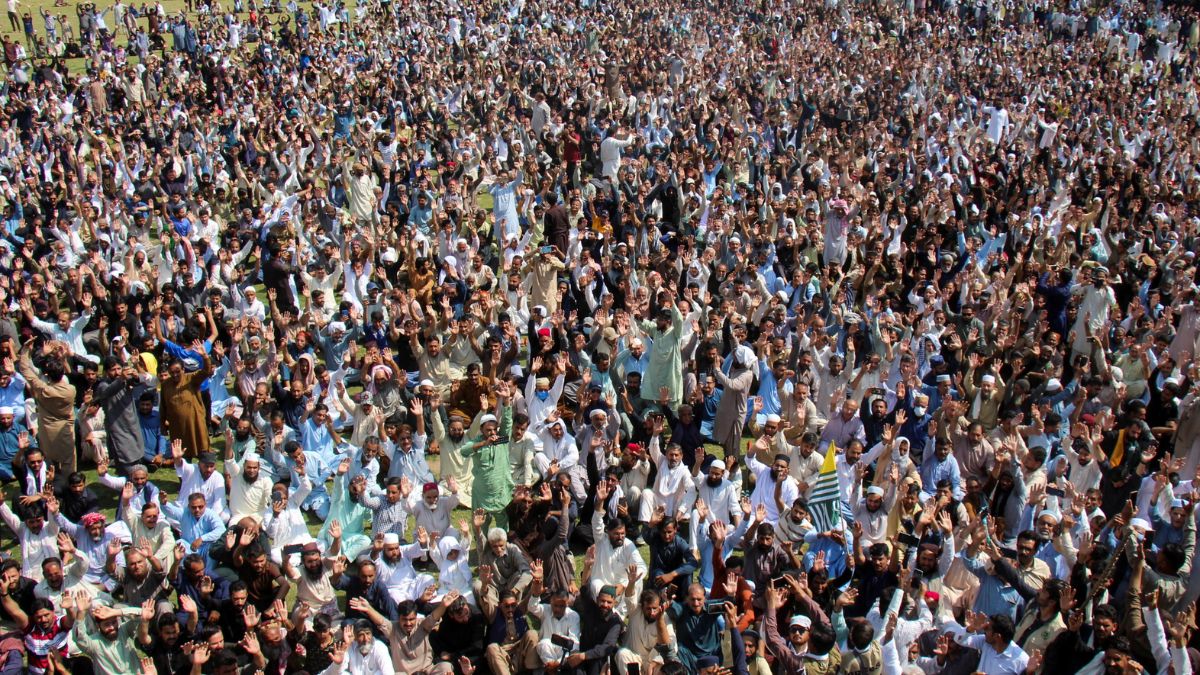Pakistan-occupied Kashmir (PoK) has reportedly erupted into protests again. This time, the demonstrations are led by students and Gen Z activists over a rise in university fees and the “faulty” exam evaluation process.
These protests come just days after the Pakistan government signed an agreement with the protestors to end the violent demonstrations in PoK. But what has caused anger in the region now?
Let’s take a closer look.
‘Gen Z’ protests in PoK
Earlier this month, protests broke out at a university in Muzaffarabad, PoK , against fee hikes and discrepancies in exam results, as per reports.
The demonstrators were unhappy with the introduction of a new digital assessment or “e-marking" system at the matriculation and intermediate levels.
The results of the intermediate first-year exams were released after a delay of six months.
The assessment spread outrage among thousands of students, who claimed they received unexpectedly low marks. Others said they were marked as passed in subjects they never appeared for, reported IANS.
While the Board of Intermediate and Secondary Education in Mirpur has formed a panel to review the process, the government imposed rechecking fees of Rs 1,500 per subject, further fuelling the anger.
As per Kashmir Digital, the university administration rejected claims of a 60 per cent fee surge, calling them “false and baseless."
It said a 10 per cent annual hike was applicable under existing regulations.
In its statement, UAJK said that teaching had been suspended at its Chella campus “to ensure the safety and security of students, faculty, and staff."
Impact Shorts
More ShortsDespite the clarification, protests continued. Students at the Chella campus also demonstrated against what they called were poor facilities, lack of transport, and administrative indifference.
The issue also spread to Pakistani cities like Lahore, where intermediate students staged a sit-in outside the Lahore Press Club last month, as per India Today.
Protests turn violent
The protests at UAJK began peacefully but turned violent after gunfire at the protest site injured one student.
A man opened fire on the students before fleeing the scene, Kashmir Digital reported, citing eyewitnesses.
The incident reportedly took place in the presence of police officers. However, no immediate action was taken despite a police station being nearby the campus.
Videos of the firing and subsequent chaos spread on social media. Students reportedly resorted to burning tyres, blocking roads, and chanting slogans against the Pakistan government and the Pakistan Army.
UAJK urged law enforcement agencies to take legal action against those responsible for the violence.
As per IANS, the Sharif government and Pakistan’s intelligence agencies are increasingly alarmed by the student-led nature of the protests. Given Nepal’s and Bangladesh’s Gen Z uprisings, concerns have also arisen in Islamabad.
When PoK was gripped by protests in Oct
Massive protests were reported across PoK on September 29. Violence rocked the agitation after talks broke down between officials and leaders of the Joint Awami Action Committee (JAAC), a representative body of protestors.
The protestors had issued a charter of 38 points, urging the authorities to accept their demands or they would take to the streets. The protests led to violent clashes with police that killed at least 10 people, including three police personnel.
Hundreds of policemen and civilians were injured during the unrest.
The demonstrations had first begun in 2023 over rising electricity prices and a shortage of subsidised wheat. They soon turned into an outlet to express frustration against the Pakistani state’s economic exploitation and political suppression.
Following the violence, Pakistan Prime Minister Shehbaz Sharif sent a high-powered delegation to Muzaffarabad to negotiate with the protestors.
Days after the violent unrest in PoK, the Pakistani government and protesters signed an agreement to end the ongoing demonstrations in early October.
As part of the deal, the government agreed to set up two additional intermediate and secondary educational boards in the Muzaffarabad and Poonch divisions of PoK. It also promised to release funds for health cards in the region within 15 days for the free treatment of patients.
With inputs from agencies
)